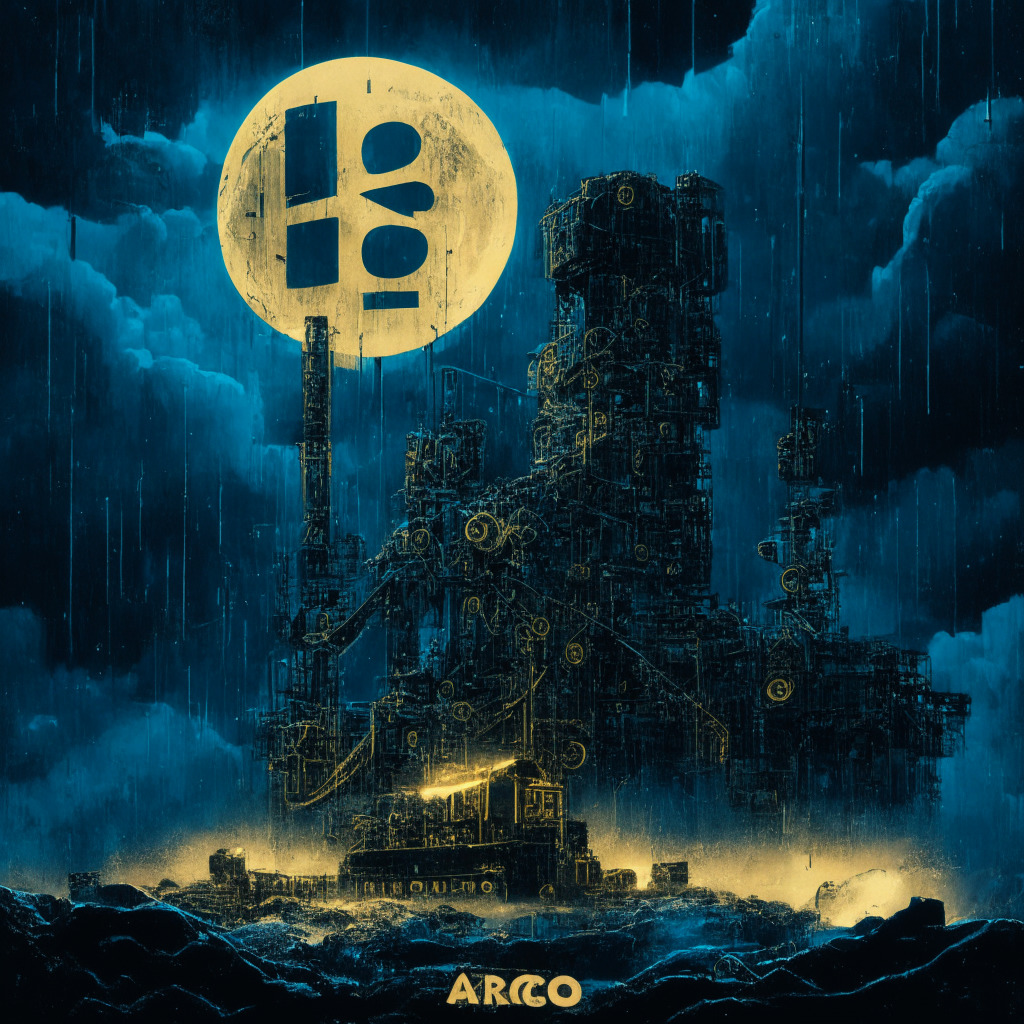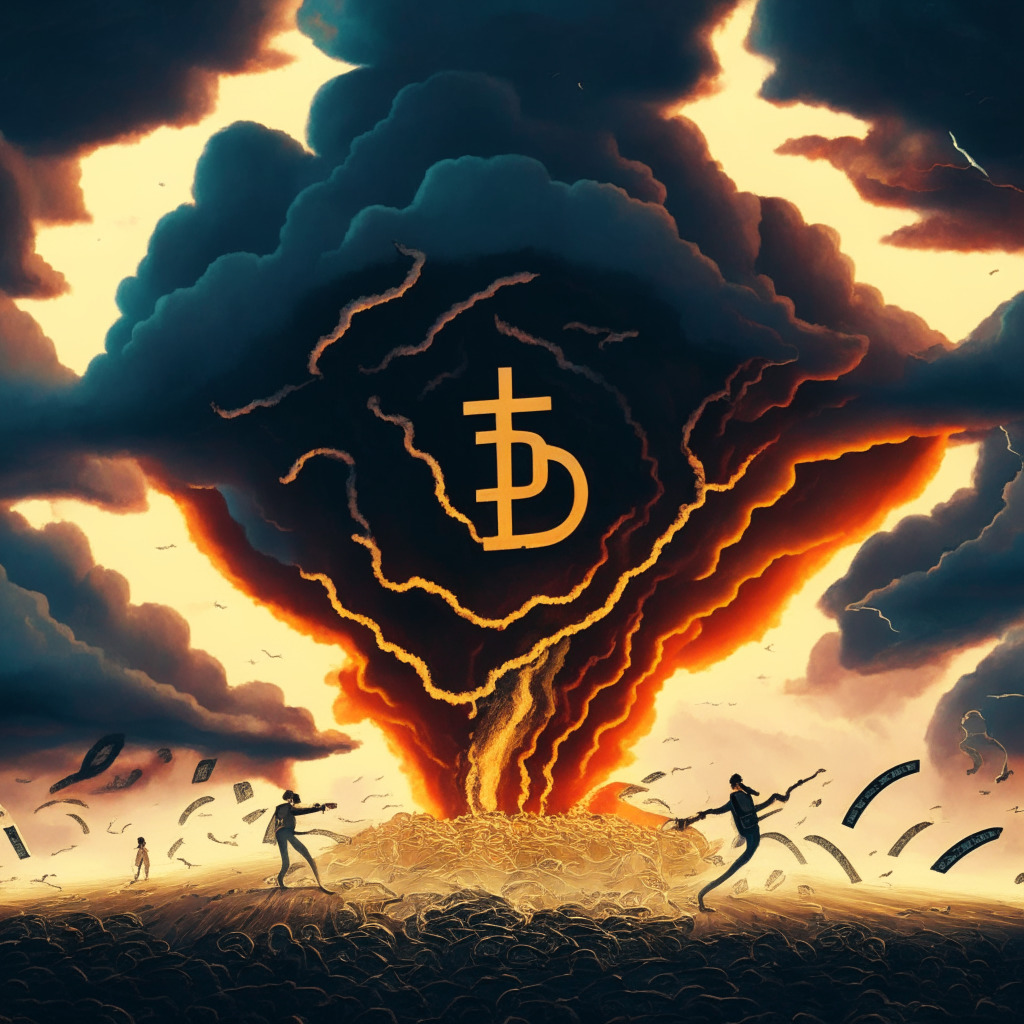“Farmville co-creator, Amitt Mahajan, backed by Proof of Play, has secured $33M to develop Web3 games, aiming to revolutionize the gaming sector with blockchain technology. The venture aims to facilitate smooth gameplay and promote decentralization but faces potential complexities and risks of emerging technology.”
Search Results for: Alan Turing
CEO Transition at Near Foundation: A Challenge or Opportunity for Blockchain’s Mainstream Adoption?
Marieke Flament, CEO of the Near Foundation, is stepping down from her role, with no specified reason for her departure. Under her leadership, Near Foundation’s treasury balance has grown to an estimated $350 million. Her tenure saw the onboarding of many web2 players, and fostering of web3 innovators, enabling Near to become the 40th largest crypto by market cap. Her departure leaves questions about the future direction of Near.
Building Your Own Cryptocurrency Wallet: Alluring Innovation or Security Nightmare?
Using Trezor’s open-source code, electronics design manager Florin Cocos constructed his own DIY Trezor cryptocurrency wallet. However, creating a functioning hardware wallet requires expertise in electronics and significant time investment. Aspects including potential security vulnerabilities and the required level of technical know-how should also be considered before undertaking such a project.
Macro Winds Drive Traders to Niche Markets: Highs and Lows in the Crypto Landscape
“As Bitcoin and Ether face resistance, traders are exploring niche markets, notably new coins like XDOGE and EmotiCoin. Rising newcomer, MoonDAO token, is drawing attention too. Alternatives to these include crypto presales, offering great potential returns, though with high risks.”
Easing Crypto Entry: The Struggle for Streamlined Onboarding While Retaining Security in Blockchain Applications
Sui Network has integrated Google, Facebook, and Twitch logins into its DApps (decentralized applications), aiming to streamline the onboarding process on Web3 and eliminate the need for managing an external crypto wallet. The new zkLogin (Zero Knowledge login) feature ensures user privacy and security, essential characteristics in Blockchain applications.
Regulatory Crackdown on Singapore’s Crypto Giants: Deadline or Lifeline for Blockchain Industry?
Singapore’s financial watchdog has barred Three Arrows Capital’s founding members from engaging in the nation’s regulated financial services for nine years. This restrictive ruling raises questions about the impact on the wider blockchain-cryptocurrency industry, balancing market integrity and innovation.
Is PayPal’s Ethereum-based Stablecoin, PYUSD, Truly 100% Asset-Backed? Examining the Claims
“PayPal’s Ethereum-based stablecoin, PYUSD, has full asset backing, primarily from U.S. Treasury reverse repurchase agreements, says Paxos. Though overcollateralization safeguards assets, it could limit profits. Some PYUSD assets are in uninsured cash deposits, reflecting typical banking risks. PYUSD’s transparent operation may soothe some investors while raising others’ skepticism.”
U.S. Regulatory Hurdles: Driving Crypto Startups Towards Friendlier Shores?
“Ripple’s CEO, Brad Garlinghouse, argues that the U.S. is the worst country for crypto start-ups due to its hesitance towards digital asset innovation. He highlights the UK, Singapore, UAE, and Switzerland as nations nurturing such innovation. Aggressive lawsuits by SEC and CFTC complicate the implementation of crypto regulations in the U.S., possibly inducing a mass exodus of blockchain startups to friendlier jurisdictions.”
Exploring the Probability of Marking Digital Ruble Tokens: A Double-Edged Sword for Russian CBDC
The Russian Central Bank potentially explores “marking” digital ruble tokens to track CBDC transactions, allowing close monitoring of funds usage. This suggests super-traceable tokens could be a reality soon, although there are cautionary notes around the required balance between regulation and autonomy in digital currency.
Blockchain’s Potential Role in AI Authentication and Its Legal Challenges in the US
“U.S. Rep. Tom Emmer suggests that blockchain technology could play a key role in authenticating AI-generated data, marking a significant intersection for blockchain and AI. Additionally, he signals potential policy distractions on digital assets, urging for innovative strides rather than legal controversies in cryptocurrency policies.”
High-Stakes Crypto Feud: The Winklevoss-DCG Saga and its Implications on the Blockchain Future
The feud between crypto tycoons Cameron Winklevoss and the Digital Currency Group (DCG) led by Barry Silbert, involving accusations of fraud and illicit activities, underscores the need for more transparency and impending stringent regulations in the crypto world.
Prospects and Perils: The Chicago Fed’s Optimistic Outlook vs the Global Market’s Apprehension
“Economists at the Federal Reserve Bank of Chicago suggest economic tightening’s goal may have been achieved, with implemented rate increases potentially leading to a soft landing and guiding inflation towards the 2% mark. This scenario seems particularly favorable for cryptocurrencies’ market performance, poised for a ‘goldilocks moment’.”
Crypto Market in Slumber: Spot Trading Hits Historic Low VS Evolution of Tokenization & ETFs
“Crypto spot trading hits its lowest point since March 2019, with a 7.78% slump in volume on centralised exchanges. Tokenization in finance is emerging from South Korea, aiming to enhance transaction efficiency and transparency. However, with a decrease in worldwide search queries for “cryptocurrency”, there is a shrinking general interest in digital assets, potentially forecasting a bearish market trend.”
The Fall of Celsius: A Cautionary Tale of Blockchain Revolution and Its Risks
“Alex Mashinsky, ex-CEO of the defunct crypto lender, Celsius, faces federal court restrictions due to fraud allegations, including overselling Celsius’ financial health and indulging in risky trading practices. Legal action includes civil lawsuits and a potential $4.7 billion fine. The Celsius saga exemplifies the potential risks and rewards of the blockchain revolution.”
Navigating the Tightrope: China’s Crypto Clampdown and the Global Blockchain Future
“80 Chinese accounts promoting cryptocurrency were shut down on Sina Weibo, raising concerns about blockchain freedoms. These accounts, with 8 million followers, were part of ongoing crackdowns following China’s 2021 cryptocurrency ban with primary objective of protecting property safety.”
The Unpredictable Dance Between Bitcoin and Employment Rates: A Dive into Market Turbulence
“The recent U.S. employment statistics have impacted the cryptocurrency market, especially Bitcoin’s price. Despite brief spikes, inherent volatility and external factors like the U.S. employment numbers influence market outcomes. Sustainable growth may require focus on regulatory compliance, economic growth, and finding a balance between stability and volatility for a maturing blockchain future.”
OKX’s Bold Exploration into India’s Crypto Space Amid Array of Regulatory Hazards
Crypto exchange OKX is venturing into India’s web3 space despite regulatory uncertainties. The firm aims to engage and collaborate with India’s developer community, even as the authorities focus on stringent tax measures and anti-money laundering protocols for cryptocurrency. OKX’s strategy showcases an approach of cautious audacity towards the Indian market.
UK’s Implementation of the Crypto Travel Rule: A Double-Edged Sword?
The UK’s recent implementation of the ‘Travel Rule’ for crypto transactions aims to deter anti-money laundering and counter-terrorist financing on-chain. This rule requires UK-based virtual-asset service providers to collect, verify, and share information about crypto-asset transfers, even from overseas jurisdictions.
Declining Bitcoin Presence on Exchanges: Indication of Changing Trade Dynamics or Signal of Caution?
“Bitcoin (BTC) holdings on centralized exchanges have decreased by 4%, reflecting a growing trend of traders using private wallets. This shift may mitigate massive sell-offs, but also raises concerns for new users dependent on exchanges. Recent security breaches have foregrounded the need for self-custody measures, as the crypto market undergoes a key metamorphosis.”
Beyond the $740 Million Scandal: The Tangled Web of Traditional Finance and Cryptocurrencies
The scandal involving Singapore’s largest money-laundering case, featuring the clandestine conversion of wealth into luxury goods and Tether stablecoins, underscores both the potential abuse of cryptocurrencies and the urgent need for robust regulation in the crypto industry. This case emphasizes the complexities of monitoring financial crime and calls for continuous vigilance, transparency, and strong governance within the crypto and broader financial landscape, especially moving towards a blockchain-powered future.
Argo Blockchain’s Half Year Financial Resilience amidst Crypto Market Turmoil
Argo Blockchain has managed to decrease its losses to $75 million amid a bearish crypto market. Despite financial challenges like a 21% revenue shrink, the company raised $24 million in revenue and reduced its debt profile by $68 million. Operational restructuring and strategic decisions reflect the firm’s determination to stay competitive in the crypto mining industry.
Bitcoin’s Race to $100,000: An Optimistic Prophecy or Fantasy Among Fraught Skepticism?
“Hut 8 VP, Sue Ennis, predicts Bitcoin could reach $100,000 by snaring 2%-5% of gold’s market cap. Despite political turbulence and Bitcoin’s dismal performance, she maintains that diversifying mining revenue and approval of a Bitcoin ETF could drive Bitcoin’s surge.”
Navigating the Crypto Paradox: India’s Call for Global Regulations Amidst Local Regulatory Hurdles
“India’s Prime Minister Narendra Modi calls for global collaboration in cryptocurrency regulation at the G20 summit. India, holding the G20 presidency, advocates for a global framework for managing cryptocurrencies, mirroring the universal guideline strategies of the aviation industry.”
Central African Republic on Track to Tokenize Land: A Blockchain Leap or Misstep?
The Central African Republic is making waves in the crypto world by tokenizing its land and resources on the Sango blockchain platform. This innovative approach includes the use of technology for citizenship acquisition, land ownership, and diverse investments, thus enticing potential investors and promoting a “new era of financial empowerment through blockchain technology”.
Nvidia’s AI Dominance: Potential Boom or Over-Dependence Risk Amidst Crypto Scams?
“The sharp rise in Nvidia’s share prices can be attributed to increasing demand for AI chips. The company separates itself from competitors like Intel and Micron Technologies by focusing on research and development in AI technology. However, as this sector continues to grow, scams target consumers of this technology, underscoring the need for stronger regulations and safety protocols.”
Navigating the Maze: Prospects of a Spot Bitcoin ETF Approval in the US
Fred Thiel, Marathon Digital’s CEO, believes that the growing institutional interest and recent submissions for spot Bitcoin Exchange Traded Fund may lead to its approval by the SEC. However, he also cautions that approval of one application doesn’t ensure blanket approval for all.
Tornado Cash Founders Charged: A Blow for Privacy or Triumph for Law Enforcement?
“Roman Storm and Roman Semenov, key figures of Tornado Cash, are facing charges for helping North Korea’s Lazarus Group launder over $1 billion via a privacy mixer. This incident sparks debate on blockchain privacy protections being exploited by criminals versus the potential shortfalls of legal jurisdiction in regulating such abuses.”
Vanity Bitcoin Addresses: A Personal Touch or a Privacy Nightmare?
“Vanity Bitcoin addresses are personalized BTC identifiers with select patterns or words. Despite offering customization, they potentially expose users’ blockchain activities by encouraging address reuse. The balance between personalization appeal and privacy breaches remains a significant challenge in their future usage.”
Coinbase and Circle Redefine Ties Amid Revised Stablecoin Structure: Exploring the Implications
Coinbase has taken an equity stake in Circle amid a halt in the USDC Centre Consortium’s operations, due to a more regulated environment, removing the need for a separate governance body. Circle will now be responsible for regulatory compliance and controlling the stablecoin’s smart contract keys, while plans are underway for USDC’s expansion onto six new blockchains.
Binance’s Juggling Act: Navigating Regulatory Challenges and Growing Pains in Crypto Markets
“Binance, a prominent cryptocurrency exchange, is facing regulatory challenges and payment processor issues in Europe, limiting withdrawals. However, this situation underscores the necessary growth and maturation of global digital asset markets, and highlights the need for increased regulation and security in the volatile crypto space.”
Unraveling the SHIB Price Drop: Shibarium’s Technical Woes and Meme Tokens’ Potential
“The SHIB token price experienced a significant drop following the tumultuous public launch of Shibarium, a layer-two network, with technical glitches leading to a loss of trust and depreciation in the token’s value. Amid this, the new ERC-20 meme token Sonik Coin (SONIK) exhibits potential for near-future growth, though crypto investments carry high risk.”
Navigating the Crypto Market: How Current BTC Ownership Trends Influence Global Finance
“Bitcoin speculators currently own the least BTC since its historic high of $69K, indicating market exhaustion. A decrease in BTC price could push short-term holders into a negative balance. Despite risks, long-term investor commitment in Bitcoin remains high, and El Salvador’s adoption of Bitcoin has boosted investor confidence.”































